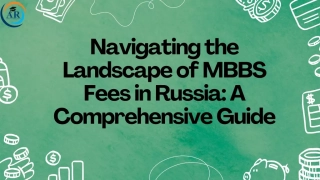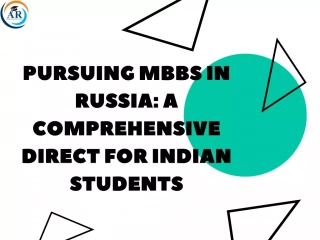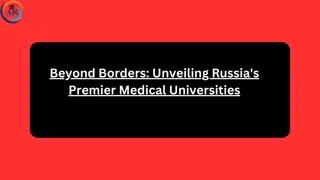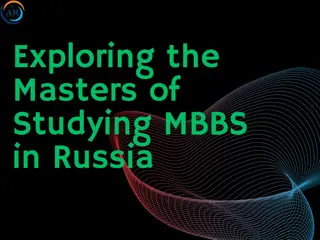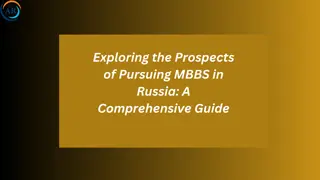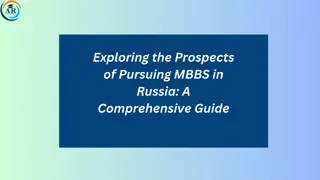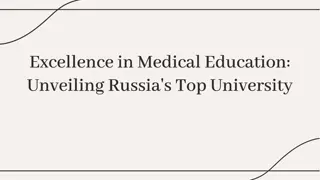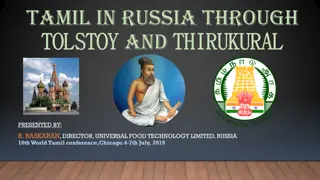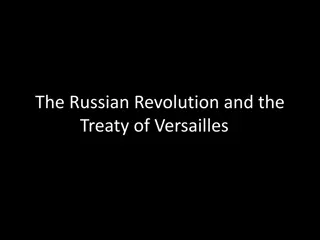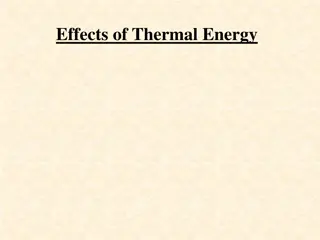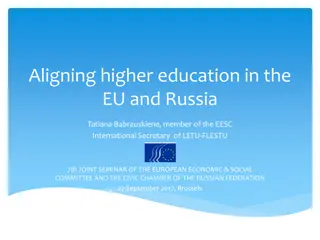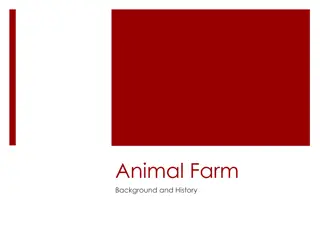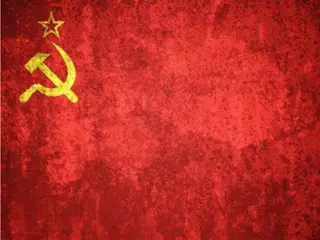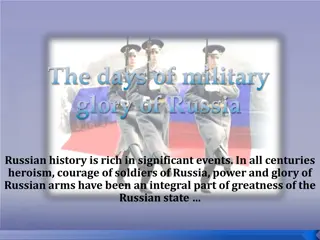The Rise of Russia: From Mongol Rule to Tsarist Expansion
Russia's journey from driving out the Mongols to the expansionist policies under the Tsar, marked by Ivan III's reign, highlighting cultural influences, political struggles, and territorial gains leading to independence from Mongol rule.
Download Presentation

Please find below an Image/Link to download the presentation.
The content on the website is provided AS IS for your information and personal use only. It may not be sold, licensed, or shared on other websites without obtaining consent from the author. Download presentation by click this link. If you encounter any issues during the download, it is possible that the publisher has removed the file from their server.
E N D
Presentation Transcript
Chapter 18 The Rise of Russia
1450-1480: Mongols (Tatars) were driven out of Russia Followed by Russian expansion (much of the land Asian)
1450-1750: Russias great land empire formed Limited commercial exchange 17th century gained leading role in Eastern Europe Regional kingdoms remained in Eastern Europe (differed from Russia) 17th century Poland and Lithuania rival Russia
Culture of Russia influenced by Byzantine Empire Orthodox Christianity Vibrant cultural traditions Rich art Two centuries of Mongol rule had reduced Russia s cities and trade and lowered its cultural and educational levels Blocked Russia from Renaissance Peasants reduced to serfdom Controversy of Western influence developed Embrace it or reject it? Eurasian Russian Empire would dominate region
Russias Expansionist Politics under the Tsar First Russia needed to defeat Mongols 14th century Duchy of Moscow was center for liberation effort Local princes established more autonomy Effectiveness of Mongol control began to diminish Moscow princes had gained political experience through the collection of taxes for the Mongols Moved toward regional independence
1462-1505: Ivan III (Ivan the Great) Styled himself tsar ( autocrat of all Russians ) 1462 freed large part of Russia 1470s incorporated trading city of Novgorad Organized a strong army Government had a military emphasis Used loyalties to the Orthodox Christian faith and to Russia (blend of nationalism and religion) to win support Head of the Orthodox Church 1480 Declared Russian independence from Mongol rule Moscow freed from all payments to Mongols Russia gained a vast territory running from the borders of the Polish-Lithuanian Kingdom to Ural Mountains
The Need for Revival Mongol control never reshaped basic Russian values Rulers were only interested in tribute Most Russians remained Christians Most local administrative issues remained in hands of regional princes, landlords, or peasant villages Mongol period reduced the vigor of Russian cultural life Lower levels of literacy among priesthood Economic life deteriorated Trade down Manufacturing limited Russia had become a purely agricultural economy dependent on peasant labor
1533-1584: Ivan IV (Ivan the Terrible) Continued policy of Russian expansion Greater emphasis on controlling the tsarist autocracy Confiscated large estates, redistributed to supporters Used terror to subdue civilian population Earned nickname by killing many Russian nobles (boyars) Increase power of tsar, decrease power of boyars Killed his own son in a fit of rage
Patterns of Expansion Territorial expansion focused on Central Asia Pushed southward toward Caspian Sea Moved East into Ural mountains Motivated by desire to push back former Mongol overlords Ivan III and Ivan IV recruited Cossacks Free peasants that settled on newly conquered land Recruited to settle on the steppe and join cavalry Combined agriculture with daring military feats on horseback Conquered Caspian Sea area Moved into western Siberia (across the Urals)
Expansion also offered tsars: A way to reward loyal nobles and bureaucrats by giving them estates in new territories Provided new agricultural areas Sources of labor Russia used slaves for certain kinds of production work into the 18th century Expansion added diversity of people (multicultural empire)
Western Contact and Romanov Policy Early tsars carefully managed contacts with western Europe Realized Western Europe was superior culturally and economically Ivan III eager to launch diplomatic missions to leading Western states Ivan IV British merchants established trading contacts with Russia Manufactured products in exchange for furs and other raw materials (from Russia)
Foreign architects modified Renaissance styles to take Russian building traditions into account Elaborate, onion-shaped domes Distinctive form of classicism
1598 - Ivan IV died without a heir, led to The Time of Troubles New power claims by boyars Fifteen years of turmoil Numerous tsars, imposters, and peasant revolts 1610 - Invasions from Sweden and Poland repelled by volunteer armies Volunteer army fighting the Poles
1613 assembly of boyars chose a member of the Romanov family as tsar Romanov dynasty was to rule Russia until great revolution of 1917 Autocratic monarchy Election of 16 year old Michael Romanov, the first Tsar of the Romanov dynasty
Michael Romanov Reestablished internal order Drove out foreign invaders Resumed expansionist policy of predecessors A successful war against Poland brought Russia part of Ukraine (including kiev); Russian territory to south also expanded Alexis Romanov Michael s successor Limits powers of nobles and Orthodox Church Policies resumed the Orthodox tradition of state control over the church
Russias First Westernization (1690-1790) End of 17th century Russia had become one of the great land empires Unusually agricultural Peter I (son of Alexis; aka Peter the Great) ruled from 1689 to 1725 Extended his predecessors policies Built up tsarist control Expanded Russian territory Added a more definite interest in changing selected aspects of Russian economy and culture by imitating Western forms
Tsarist Autocracy of Peter the Great Peter was an autocrat (absolute ruler, dictator) Put down revolts against his rule with great cruelty Had no interest in parliamentary features of West
Peter's reforms: progressive but autocratic Military reform: to build powerful , modern army (largest European army) Imitates the West Offered better pay and modern weapons to peasants Aristocratic officers ordered to study mathematics and geometry 1700-1722: Defeated Sweden in Great Northern War Set up a secret police (would survive until 1990s) Prevent dissent Monitor the bureaucracy Bureaucratic reform: to facilitate collection of taxes Only nobles educated to serve as government officials Table of Ranks allowed social mobility for civil servants by merit and service Created new nobles based on service, loyalty, success in army Freed the states from exclusive dependence on aristocratic officials Social reform: challenged established customs Abolished the seclusion of women; encouraged social mixing of the sexes Ordered subjects to wear western clothing; ordered men to shave beards
Peter attacked the Ottoman Empire (won no great victories) Warred with Sweden and gained territory on eastern coast of the Baltic Sea Russia became a major factor in European diplomatic and military alignments The tsar commemorated Russia s shift of interests westward by moving his capital from Moscow to a new Baltic city that he named St. Petersburg Peter the Great Meditating the Idea of Building St Petersburg at the Shore of theBaltic Sea byAlexandre Benois, 1916
What Westernization Meant Peter concentrated on: Westernization from top down which hurt Russian traditions Improvements in political organization Selected economic development Cultural change Provide culture and education for nobles (boyars) Modernized Russia s small bureaucracy and altered the military structure by using Western organizational principles Well-defined military hierarchy Specialized bureaucratic departments Improved army s weapons First Russian navy Provincial governors were appointed from St. Petersburg Systemized law codes Revised tax systems Taxes on ordinary Russian peasants increased steadily Economic efforts focused on building up metallurgical and mining industries Benefited from extensive iron holdings Financed state-run weapons and shipbuilding facilities
Peter was eager to make Russia culturally respectable in Western eyes Required nobles to wear Western clothes and shave off beards Many of the Western-oriented changes impacted only the upper class Provide more education in mathematics Founded scientific institutes and academics along Western lines Western fads and fashions came into new capital Ballet (France) Christmas tree (Germany) The Barber
Peter also pressed for improvements in the condition of upper class women Could now attend public events (like women in Western Europe) Peter did not try to involve ordinary people of Russia in the technological and intellectual aspects of Westernization There was no interest in building the kind of worldwide export economy characteristic of the West Peter wanted economic development to support military strength rather than to achieve wider commercial goals Westernization that did occur brought hostile responses Many peasants resented this Westernization and expenses of their landlords (some of whom no longer even knew Russian but spoke only French)
Consolidation Under Catherine the Great 1724 - Death of Peter the Great was followed by several decades of weak rule Ineffective emperors and empresses Russian territorial expansion continued Several clashes with Ottoman Empire and further exploration and settlement in Siberia
1762 1795 :Catherine the Great Resumed Peter the Great s interests in many respects Defended the powers of the central monarch Made a deal with nobles back me up, keep serfs Put down a vigorous peasant uprising Selective Westernizer Summoned various reform commissions to discuss new law codes and other Western style measures Reduction of traditionally severe punishments Combined genuine Enlightenment interests with her need to consolidate power as a truly Russian ruler Introduced western literature; promoted Russian literature Great friend of Voltaire Promoted immunization against smallpox
Catherine was a centralizer (advocate of a strong tsarist hand) But Catherine also gave new powers to the nobility over their serfs Nobles served a strong central government and staffed it as bureaucrats and officers Nobles were a service aristocracy (not an independent force) Most of the actual administration over local peasants (except for those on government run estates) was wielded by noble landlords Landlords could demand peasant labor, levy taxes in money and goods, and even impose punishments for crime because landlord dominated courts administered local justice Catherine increased the harshness of punishments nobles could decree for their serfs
Catherine supported Western- style art and architecture Continued to build St. Petersburg in classical styles When the French Revolution broke out (1789), Catherine was quick to close Russia s doors to the seditious writings of liberals and democrats Censored a small but emerging band of Russian intellectuals who urged reforms along Western ideals One Western-inspired radical (noble named Radishev) sought to abolish serfdom Harassed by Catherine s police (his writings were banned) St. Petersburg Cathedral; started by Peter III and finished by Catherine the Great
Catherine pursued Russian expansion Resumed campaigns against the Ottoman Empire Won territories in Central Asia The Russian-Ottoman contest became a central diplomatic issue for both powers Russia became increasingly ascendant Claimed territory of Alaska in Russia s name Russia was able to win agreements with Austria and Prussia for partition of Poland Eliminated Poland as an independent state, and Russia held the lion s share of the spoils Polish parliament ineffective and unstable; country poorly defended Russia s ultimate role in putting down the French armies of Napoleon after 1812
By the time of Catherines death in 1796, Russia had passed through three centuries of extraordinary development Won independence Constructed a strong central state Brought new elements into Russia s culture and economy Much of this borrowed from the West
Themes in Early Modern Russian History Because of its great estates, its local political power, and its service to the state, the Russian nobility maintained a vital position in Russian society
Serfdom: The Last of East Europes Masses 17th and 18th centuries power of the nobility over the serfs increased steadily Before the Mongol conquest, Russian peasants had been largely free farmers After the expulsion of the Tatars, increasing numbers of Russian peasants fell into debt and had to accept servile status to the noble land owners when they could not repay Russian government actively encouraged this process from 16th century onward Serfdom gave the government a way to satisfy the nobility and regulate peasants when the government itself lacked the bureaucratic means to extend direct controls over the common people As new territories were added to the empire, the system of serfdom was extended accordingly
By 1800 half of Russias peasantry was enserfed to landlords Much of the other half owed comparable obligations to the state 17th and 18th century laws passed tied serfs to the land and increased the legal rights of the landlords 1649 law created hereditary status of serfs Russia was setting up a system of serfdom very close to outright slavery Bought and sold Gambled away Punished by their masters Unusual case of slavery people essentially enslaved many of its own members Flogging a serf
Coerced labor was used to produce grain surpluses sold to Western merchants for the growing cities of western Europe In return, Western merchants brought in manufactured goods, including the luxury furnishings and clothing essential to the aristocratic lifestyle Serfs on the estates of eastern Europe were taxed and policed by their landlords Paid high taxes or obligations in kind, and they owed extensive labor service to the landlords or government 1785 allowed landlords to punish harshly any serfs convicted of major crimes or rebellion Most peasants were illiterate and poor
Trade and Economic Dependence In between serfs and landlords, there were few layers of Russian society Cites were small 95% of population remained rural Some nonnoble bureaucrats and professionals Small merchant groups Most of Russia s European trade was handled by Westerners Russia s economic system produced enough revenue to support an expanding state and empire Russia was able to trade in furs and other commodities with areas in central Asia Russia s expansion yielded significant population growth There was little motivation among the peasantry for improvement because increased production usually was taken by the state or landlord Manufacturing lagged behind Western standards
Social unrest Russia s economic and social system led to protest By the end of 18th century, a small but growing number of Western- oriented aristocrats such as Radishev were criticizing the regime s backwardness Wanted to abolish serfdom Recurrent peasant rebellions Russian peasants for the most part were politically loyal to the tsar, but they harbored bitter resentments against their landlords Accused them of taking lands that were rightfully theirs
1770s Pugachev uprising Pugachev Cossack chieftain who claimed to be the legitimate tsar Promised an end to serfdom, taxation, military conscription, and abolition of landed aristocracy Killed thousands of nobles, officials, and priests He was brought to Moscow in a case and cut into quarters in a public square


